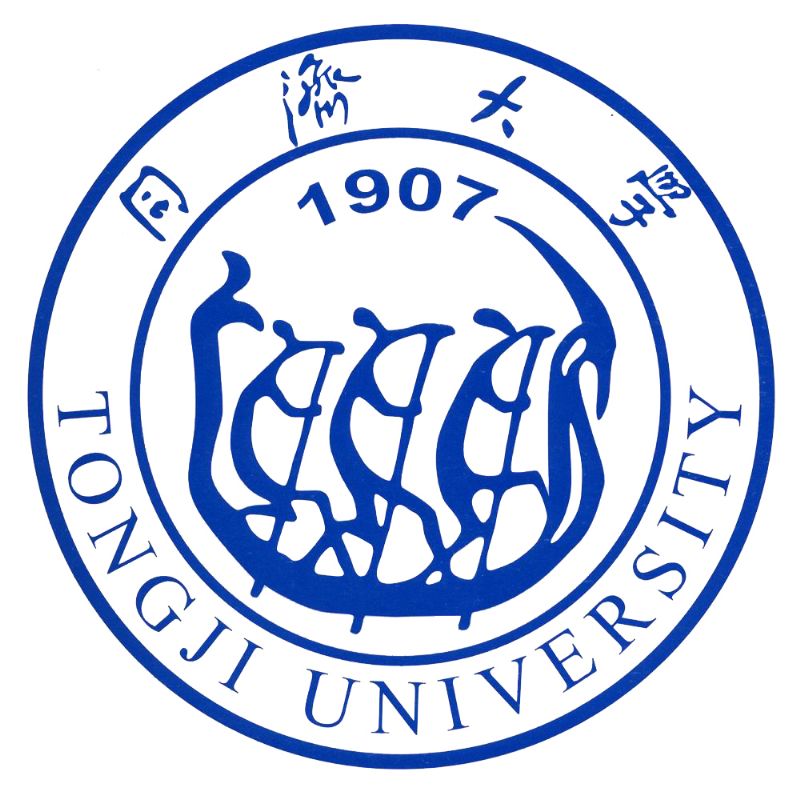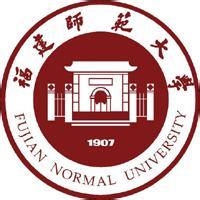2015 International Conference on Intelligent Computing (ICIC2015)
August 20-23, 2015
Fuzhou, China
(http://www.ic-ic.org/2015/index.htm)
 ICIC2015 Online Attendance Confirmation and Hotel Reservation System:
ICIC2015 Online Attendance Confirmation and Hotel Reservation System:
Conference Venue
ICIC2015 Conference Venue is the Fu Jian Hai Lian Business Hotel (Fujian Hailian Shangwu Dajiudian: http://room37746.leyohotel.com/index.html), which is a four star hotel. It is located at No.1 East Gate Ta Tou Road, near a commercial street and the entrance to East Street. The railway station is a 10-minute drive away and Fuzhou Changle Airport is 49.9 km (31 mi) from the hotel.?Visitors can make use of free Wi-Fi access in public areas. Free parking is also available.?Diners can choose from Chinese or Western cuisines at the on-site dining facilities or enjoy refreshments at the cafe.?Business travelers may host events in the hotel's meeting rooms or take advantage of the business center.?After relaxing with a foot massage, tired guests can spend time at the sauna or take a trip to the hot springs. A game room is also available.
Location and Road Map


To check more road map lines, please use the link:
http://www.ic-icc.cn/confirm_reserve/map.html
Room Rates

注:1)所有房间均配备免费高速宽带、国内外长途电话、中央空调系统;2)房价包含早餐;3)为了保证大家的安全,请预定我们安排的“福建海联商务大酒店”
Notes: 1)All rooms are equipped with free high-speed Internet access, domestic and international long-distance telephone, central air conditioning system;2)Room Rate includes breakfast; 3) For your safety, please reserve Fujian Hailian Business Hotel.
Fujian Hailian Business Hotel

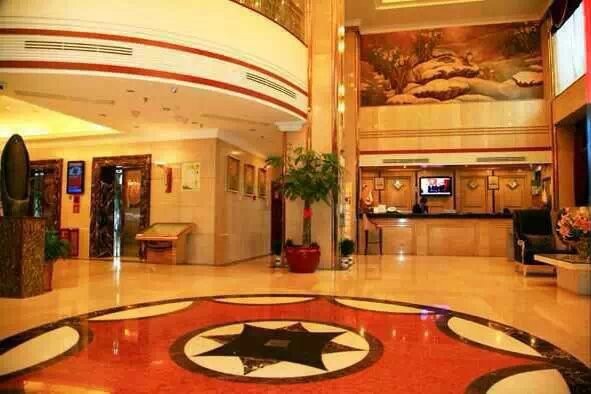
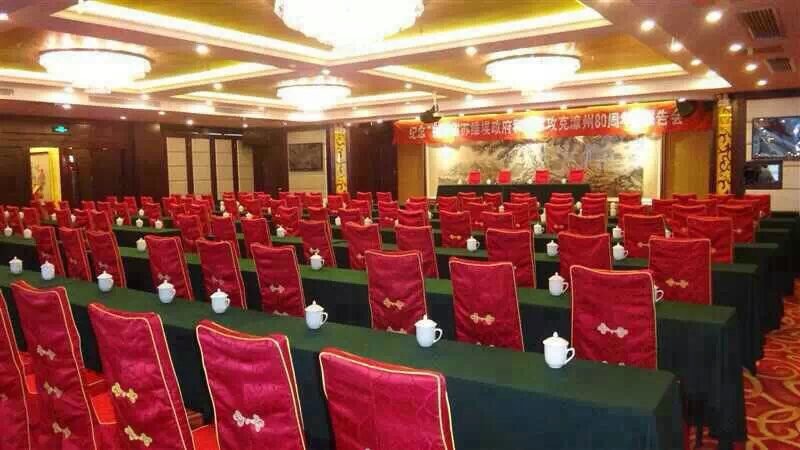
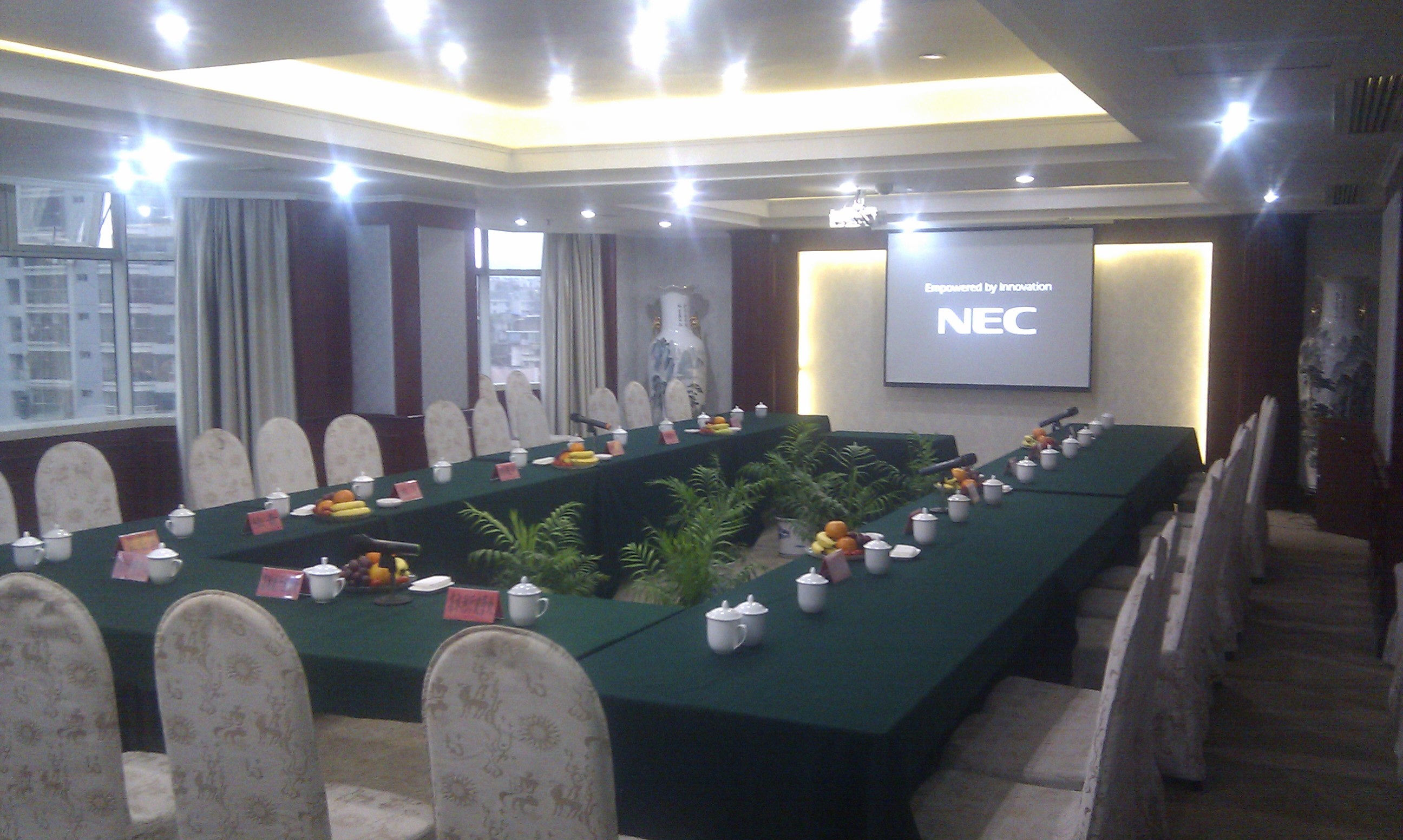

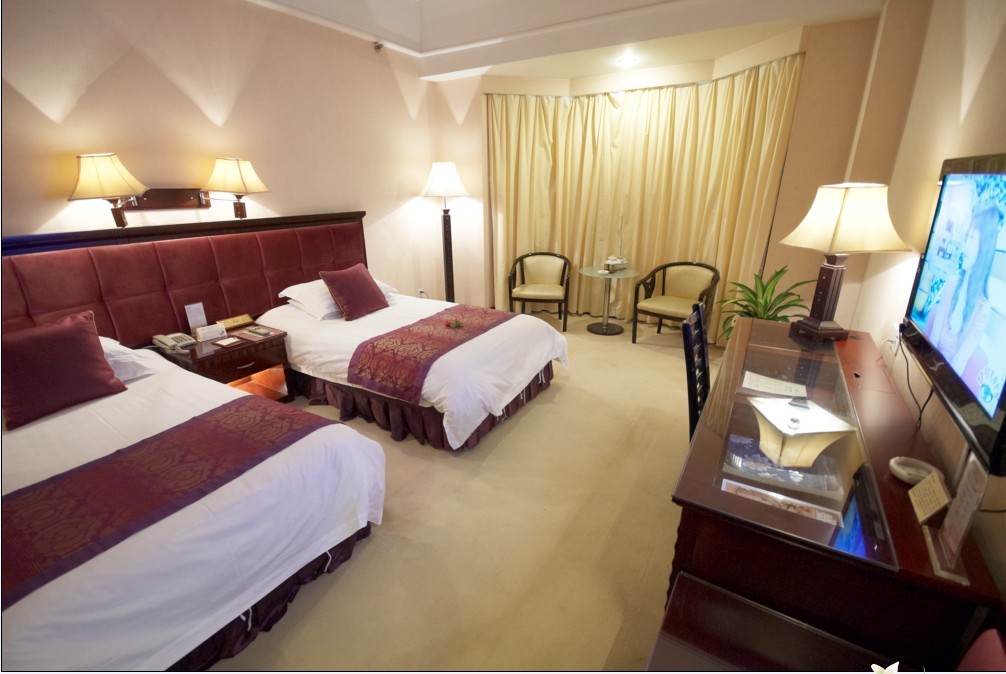
Fuzhou Impression
.jpg) Fuzhou is a city with a history of over 2200 years. Fuzhou is located in the eastern Fujian province in downstream of Minjiang River, is the political, economic, and cultural center. The city has a total area of 11968 square kilometers. The urban area is 1043 square kilometers. Its population was 7,115,370 inhabitants as of the 2010 census, in which 4,408,076 inhabitants are urban standing around 61.95%, while rural population is at 2,707,294 standing around 38.05 percent. Because banyan was planted everywhere, it is called ‘Rongcheng’ that means ‘banyan city’. Fuzhou is in the southeast coastal area and facing the sea to the east with a pleasant climate, the genus of evergreen, warm and humid subtropical monsoon climate. The summers are long, very hot and humid; the winters are short, mild and dry. In most years torrential rain occurs during the monsoon in the second half of May. The monthly 24-hour average temperature ranges from 10.9 °C (51.6 °F) in January to 28.9 °C (84.0 °F) in July, while the annual mean is 19.84 °C (67.7 °F). With monthly percent possible sunshine ranging from 24 percent in March to 54 percent in July, the city receives 1,607 hours of bright sunshine annually.
Fuzhou is a city with a history of over 2200 years. Fuzhou is located in the eastern Fujian province in downstream of Minjiang River, is the political, economic, and cultural center. The city has a total area of 11968 square kilometers. The urban area is 1043 square kilometers. Its population was 7,115,370 inhabitants as of the 2010 census, in which 4,408,076 inhabitants are urban standing around 61.95%, while rural population is at 2,707,294 standing around 38.05 percent. Because banyan was planted everywhere, it is called ‘Rongcheng’ that means ‘banyan city’. Fuzhou is in the southeast coastal area and facing the sea to the east with a pleasant climate, the genus of evergreen, warm and humid subtropical monsoon climate. The summers are long, very hot and humid; the winters are short, mild and dry. In most years torrential rain occurs during the monsoon in the second half of May. The monthly 24-hour average temperature ranges from 10.9 °C (51.6 °F) in January to 28.9 °C (84.0 °F) in July, while the annual mean is 19.84 °C (67.7 °F). With monthly percent possible sunshine ranging from 24 percent in March to 54 percent in July, the city receives 1,607 hours of bright sunshine annually.
Fuzhou is also known for its hot springs and much has been done to attract international tourism including high-end hotels and golf courses. Fuzhou is a city full of culture with a history dating back two-thousand years that has left a legacy of many arts-related industries, including lacquer work, stone sculpting and cork cutting. And traditional arts such as Min Opera also play an important role in China's culture.
Many achievements have been made here in fields including technology, education and the military industry. The Fuzhou Navy Yard was established in the nineteenth century and a naval academy was also opened. The city's role in the development of maritime culture in modern China has earned it the title of "cradle of the modern Chinese navy". Over the past half a century or so, Fuzhou's economy has prospered. Entrepreneurship has flourished industries and companies were established in Fuzhou and many leading domestic and international companies are also represented here. The local government aims to take advantage of Fuzhou's geographical advantages and utilize its economic infrastructure to make it a manufacturing base on the west bank of the Taiwan Straits. Fuzhou is in the "Top 100 Foreign Trade Cities (2011-12)", a list issued recently by China Customs Magazine.
Tourist Attractions in the city can be found in the web page as follows. http://www.vhotel.org/Fuzhou1-Attractions.html.
1.The Three Lanes and Seven Alleys are located at the center of Fuzhou city, which contain ancient architectural treasures. The area enjoys a reputation as "the museum of the buildings of the Ming and Qing dynasties (1368-1911)". It boasts more than 150 ancient buildings that have courtyards of great historic value. Most were the homes of scholars, bureaucrats and wealthy figures of the time.
2. West Lake Park, in the center of Fuzhou, is the most well-preserved and intact classical garden in the city. It covers more than 420,000 square meters, of which three quarters is water, offering a picturesque, quiet retreat from the urban rush. In days of old it attracted men of letters and artists, helping to inspire their works. One of those greats was the poet Xin Qiji of the Song Dynasty (960-1279), who compared the lake to the maiden Xi Shi, one of the famous four beauties of ancient China.
In the southwest of the park is Panda Hall, well-known for its successful rearing and breeding of pandas, which gives visitors the chance to get a close-up view of China's most famous animal.
3. Wuyi Square is regarded as the geographical and spiritual heart of Fuzhou. To the north of the square are the municipal government buildings, to its south is the city's small stadium and to the east and west is the Fuzhou People's Congress Hall.
Visit the square at dawn or dusk to see soldiers raise or lower the national flag.
Every night, the square is a bustling meeting place for locals, who perform dances around the musical fountain and the white statues that sit at its center. To the south of the fountain is a stainless steel sculpture named Sanshanyishui (which literally means three hills and one river), as well as a statue of Mao Zedong.
4. Hualin Temple
Hualin Temple, in the downtown area, is a Buddhist temple outside the compound of the Fujian provincial government, at the southern foot of Pingshan Hill in northern Fuzhou.
The temple, in the simplicity and elegance typical of the Tang Dynasty (AD 618-907), now functions solely as a museum.
Built in 964 AD, this is the oldest wood architecture extant in South China.
5. Specail Eating in Fuzhou
Fuzhou dishes are representative of the Min Cuisine that is very much a feature of Fujian province and is one of the eight major cuisines of China. Located at the mouth of the Minjiang River and on the edge of the East China Sea, Fuzhou is famed for its fresh-water-fish dishes and seafood.
The best-known Fujian dish is fotiaoqiang, a kind of soupy stew of delicacies. Other well-known dishes include yuwan (fish balls), minced beef and pork inside a fishy flour ball of dough in a thin broth, and libing (oyster cake), a traditional food in Fuzhou similar to a pizza but with oyster and leek. Bianlouyan, a special dumping can only be found in Fuzhou.
Attractions around Fuzhou City
1. Gushan Mountain
.jpg) Gushan Mountain, the most famous sight in Fuzhou, is a classic scenic spot. It has been famous for sightseeing for over 1,000 years.. Yongquan Temple is its center with more than 100 sights scattered around it, among which main sights are Yongquan Temple, the Eighteen Sights of Damo and White Cloud Cave. Three routes can be taken to climb along the Gushan Mountain: the traditional o-ne climbs along the ancient stone path from the foot of the mountain, approximately 3.5 km long, or take a bus directly to the gate of the Buddhist Temple (8 km long.; Visitors may also take the cable car from the foot of the mountain to the Eighteen Sights of Damo.
Gushan Mountain, the most famous sight in Fuzhou, is a classic scenic spot. It has been famous for sightseeing for over 1,000 years.. Yongquan Temple is its center with more than 100 sights scattered around it, among which main sights are Yongquan Temple, the Eighteen Sights of Damo and White Cloud Cave. Three routes can be taken to climb along the Gushan Mountain: the traditional o-ne climbs along the ancient stone path from the foot of the mountain, approximately 3.5 km long, or take a bus directly to the gate of the Buddhist Temple (8 km long.; Visitors may also take the cable car from the foot of the mountain to the Eighteen Sights of Damo.
2.Baishuiyang
.jpg) Baishuiyang has the most distinctive natural landscapes among the five major scenic areas of the Yuanyang Creek. The riverbed is made of a single flat rock and is clean without pebbles. When looking down on it from above, it looks like a just raked field nestled in amongst the lofty mountains and high ranges. Of the three large shallow pools, the largest is 40,000 m2 , and at its widest the pool is 182m from bank to bank. Throughout the river’s course the water is ankle deep. The water surface glistens under the sun, forming a vast expanse of white stars. For this reason, the river is named Baishuiyang , literally the “White Water Ocean”.
Baishuiyang has the most distinctive natural landscapes among the five major scenic areas of the Yuanyang Creek. The riverbed is made of a single flat rock and is clean without pebbles. When looking down on it from above, it looks like a just raked field nestled in amongst the lofty mountains and high ranges. Of the three large shallow pools, the largest is 40,000 m2 , and at its widest the pool is 182m from bank to bank. Throughout the river’s course the water is ankle deep. The water surface glistens under the sun, forming a vast expanse of white stars. For this reason, the river is named Baishuiyang , literally the “White Water Ocean”.
According to the Chinese Ministry of Construction, the three large shallow pools of Baishuiyang are in fact examples of a rarely seen geological phenomenon. According to preliminary research by geological experts, the riverbeds are made of lava. Due to crustal movements over time, granite has intruded into some sections of the lava, forming bends in the river flow. After millennia of water flowing over the rocks in the riverbed, today’s unique geological landscape has been formed. The geology and landform of Baishuiyang are not complex, but the reason for the formation of this landform is. Till today, nobody can give a scientific and accurate explanation, leaving Baishuiyang “A Myth in the Universe” and “A Unique Scene in the World”.
3.Wuyi Mountains
.jpg) The Wuyi Mountains (Chinese: 武夷山; pinyin: Wǔyí Shān) are a mountain range located in the prefecture of Nanping, in northern Fujian province near the border with Jiangxi province, China. The mountains have been listed as a UNESCO World Heritage Site, for cultural, scenic, and biodiversity values since 1999.
The Wuyi Mountains (Chinese: 武夷山; pinyin: Wǔyí Shān) are a mountain range located in the prefecture of Nanping, in northern Fujian province near the border with Jiangxi province, China. The mountains have been listed as a UNESCO World Heritage Site, for cultural, scenic, and biodiversity values since 1999.
Mount Wuyi is the most outstanding area for biodiversity conservation in south-east China and a refuge for a large number of ancient, relict species, many of them endemic to China. The serene beauty of the dramatic gorges of the Nine Bend River, with its numerous temples and monasteries, many now in ruins, provided the setting for the development and spread of neo-Confucianism, which has been influential in the cultures of East Asia since the 11th century. In the 1st century B.C. a large administrative capital was built at nearby Chengcun by the Han dynasty rulers. Its massive walls enclose an archaeological site of great significance.
The Wuyi Mountains has a long history of tea cultivation. The four most widely known varieties of Wuyi tea are referred to as the "four famous bushes" (Chinese: 四大名枞; pinyin: sì dàmíng cōng): Big Red Robe, Iron Arhat (Chinese: 铁罗汉; pinyin: Tiě Luóhàn), White Cockscomb (Chinese: 白鸡冠; pinyin: Bái Jī Guān), and Golden Turtle (Chinese: 水金龟; pinyin: Shuǐ Jīn Guī). Lapsang souchong also originates from the area.
4.Mazu Temple
.jpg) Mazu Temple is located at Meizhou Island (湄洲岛) just off Fujian coast. Mazu (traditional Chinese: ��祖; simplified Chinese: 妈祖; pinyin: Māzǔ; Wade�CGiles : Ma1-tsu3), also spelt Matsu and Ma-tsu, is the Chinese goddess of the sea who is said to protect fishermen and sailors. The worship of Mazu began in the Song Dynasty. Mazu is widely worshiped in the southeastern coastal regions of China, especially in Zhejiang, Fujian, Guangdong, and Hainan. She is also an important deity in Taiwan. Mazu is also worshiped in East and Southeast Asia.
Mazu Temple is located at Meizhou Island (湄洲岛) just off Fujian coast. Mazu (traditional Chinese: ��祖; simplified Chinese: 妈祖; pinyin: Māzǔ; Wade�CGiles : Ma1-tsu3), also spelt Matsu and Ma-tsu, is the Chinese goddess of the sea who is said to protect fishermen and sailors. The worship of Mazu began in the Song Dynasty. Mazu is widely worshiped in the southeastern coastal regions of China, especially in Zhejiang, Fujian, Guangdong, and Hainan. She is also an important deity in Taiwan. Mazu is also worshiped in East and Southeast Asia.
Her birthplace was Meizhou (湄州) in Putian County (莆田�h), Fujian Province. She was born in the year 960. Her family had the surname Lin (林). She had the name Lin Moniang (Chinese: 林默娘). She died on 4 October 987. After her death, she was remembered as a young lady in a red dress, who would forever roam over the seas.
Legend has it that Mazu was called Mo (silence) because she never cried until one month old (at which time she let loose, “Enough already! Feed me!”). Little Miss Mo could understand and interpret Buddhist scriptures by the tender age of eight when, according to a guidebook, “she began to worship gods and recite texts, with an intention to salvate [sic] poor people.”
When she was 16, a celestial being gave her a bronze talisman, and from then on she grew in supernatural powers and wisdom. She went about doing good deeds, healing the sick with herbs, teaching how to prevent disease, and reading the sea and stars and weather to help farmers know when they should fish and when they should stay home and tell fish stories. So far so good―but then she was credited with riding the clouds, and using her power to turn the tide and to save ships, and people began calling her “The Goddess” or the “Daughter of the Dragon.” And her fate was sealed.
As Marilyn Monroe learned 2,000 years later, goddesses lead a lonely life, and Lin Mo ended hers at age 27, when she told her family, “I feel peace, but don’t want to live this life anymore. I want to ascend the mountain and travel far.” Lin Mo climbed Mount Meifeng, where mysterious clouds and music appeared. She hopped up on the clouds and sailed away with the wind, and has been salvating folks to this day.
Her spirit began appearing to ships in distress and guiding them to safe haven, and grateful fishermen started worshipping her as the goddess of the sea. Even the Imperial Court, thankful for an uninterrupted supply of fish and chips , granted her 28 royal titles, including “Holy Queen,” “Holy Lady,” and “Holy Mother.”
A tour book claims, “Mazu now becomes a tie linking the mainland and Taiwan, and has aroused the interest of the world.” Hundreds of thousands of pilgrims from around the world flock to Mazu Island each year to visit the temple and worship small statues of the goddess. They hold a special ceremony to invoke Mazu to live in the idol, and then invited the idol to return with them to their homes in Taiwan or Singapore, or Los Angeles.
5. Gulangyu
.jpg) Gulangyu Island is a car free island located just southwest of Xiamen City, Fujian province in southern China. Gulangyu Island is renowned for its delicate natural beauty, its ancient relics, and its varied architecture. It is home to about 20,000 people and is a very popular tourist destination. Visitors can reach it by ferry from Xiamen Island in about 5 minutes. The island is on China's list of National Scenic Spots and also ranks at the top of the list of the ten most-scenic areas in Fujian Province.
Gulangyu Island is a car free island located just southwest of Xiamen City, Fujian province in southern China. Gulangyu Island is renowned for its delicate natural beauty, its ancient relics, and its varied architecture. It is home to about 20,000 people and is a very popular tourist destination. Visitors can reach it by ferry from Xiamen Island in about 5 minutes. The island is on China's list of National Scenic Spots and also ranks at the top of the list of the ten most-scenic areas in Fujian Province.
During the Ming Dynasty (1368-1644), the island was called 'Yuanshazhou Island'. It got its present name from the huge reef surrounding it. When the tide comes in, the waves pound the reef and it sounds like the beating of a drum. The island came to be named 'Gulang'. Gu in Chinese means 'drum', and Lang, 'waves'.
As a place of residence for Westerners during Amoy's colonial past, Gulangyu is famous for its architecture and for hosting China's only piano museum, giving it the nickname of "Piano Island" or "The Town of Pianos" (�琴之�l) or "The Island of Music" (音�分��u). There are over 200 pianos on this island.
The Chinese name also has musical roots, as gu lang which means drum waves so-called because of the sound generated by the ocean waves hitting the reefs. Yu means "islet".
In addition, there is a museum dedicated to Koxinga, Marine World, a subtropical garden containing plants introduced by overseas Chinese, as well as Amoy Museum, formerly the Eight Diagrams Tower (八卦��).
The island of Gulangyu is a pedestrian-only destination, where the only vehicles on the islands are several fire trucks and electric tourist buggies. The narrow streets on the island, together with the architecture of various styles around the world, give the island a unique appearance. The site is classified as a AAAAA scenic area by the China National Tourism Administration.
6. Fujian Tulou Buildings
.jpg) Fujian Tulou buildings were first built from the 11th century to the 13th century (the Song Dynasty and the Yuan Dynasty of China). After the development period from the 14th century to 16th century (the early and mid Ming Dynasty of China), they became mature from the 17th century to the first half of the 20th century (the late Ming Dynasty, the Qing Dynasty, the Republic of China) and are still used today.
Fujian Tulou buildings were first built from the 11th century to the 13th century (the Song Dynasty and the Yuan Dynasty of China). After the development period from the 14th century to 16th century (the early and mid Ming Dynasty of China), they became mature from the 17th century to the first half of the 20th century (the late Ming Dynasty, the Qing Dynasty, the Republic of China) and are still used today.
Unique, widely distributed and numerous Fujian Tulou buildings are an outstanding and representative architectural form created from long life experiences under unique historical and cultural backgrounds and particular natural and geographical conditions. With a large amount of objects and written records left from different times after the 11th century, the buildings reflect the emergence, innovation and development of this extraordinary art of raw earth buildings from the 11th century till now, provide abundant material evidence for the development and evolution of specific historical processes, cultural traditions, ethnic groups and folk customs, and have globally outstanding and universal historical and aesthetical value.
Among the world's various residential buildings, Fujian Tulou is known for its unique architectural shape, large size and exquisite structure. It is distinctive in the layout, and the choice of location which is integrated into nature. The abundant ethnic and cultural connotations and particular way of inhabitation make them unique and charming.
Fujian Tulou in the mountainous areas is a unique residential building complex made from rammed earth. It is a creative masterpiece in raw earth architecture. Fujian Tulou is mostly built by mountain side in rational layout. It absorbs the Fengshui principles in China's traditional architectural planning, meeting living and defense requirements of a family who live together. It cleverly makes use of narrow flat land in the mountains and local building materials such as raw earth, timber, cobblestone, etc. The many-storied building is itself a well-equipped, cost-effective and extremely solid system. It is both of high aesthetic value and marvelous defensive capabilities. Despite its seemingly plain appearance, its concept, design, shape (circular in most cases) and exquisite interior structure is in an elegant harmony with surrounding mountains and rivers, presenting a uniquely charming picture.
Fujian Tulou is an architectural achievement and historical witness under specific natural, geographical conditions and significant social changes and turmoil, based on oriental kinship-based ethics and the tradition that a clan lived together. The modernized lifestyle and process of urbanization is influencing the continuity of traditional lifestyle. A practical way needs to be explored to protect and preserve the Tulou Building Cluster now and in the future.
The nominated Fujian Tulou is a unique and beautiful example of raw earth residential buildings or systems widely distributed in Fujian, Jiangxi and Guangdong provinces in China. Fujian Tulou is most widely distributed with the largest quantity and the richest variety. Approx. 3,000 Tulou buildings have been strictly confirmed. The properties presently proposed for inscription include ten buildings in Chuxi Tulou Cluster in Yongding County, seven buildings in Hukeng Tulou Cluster, four buildings in Gaobei Tulou Cluster and Yanxiang Lou, Zhenfu Lou, five buildings in Tianluokeng Tulou Cluster in Nanjing County, 13 buildings in Hekeng Tulou Cluster and Huaiyuan Lou and Hegui Lou, three buildings in Dadi Tulou Cluster in Hua'an County. They represent all known Tulou types and are of the best construction quality, highest aesthetic values, best preservation and management status with their authenticity and integrity least compromised.
Fujian Tulou has conformed to the oriental philosophy that regards the heaven and man as a whole and the so-called Fengshui theory of architectural planning. The indigenous construction material has been used, the site selection is either besides the mountain or along the river. Looking simple and rough in architectural style, the buildings are wonderfully elegant in form, appropriate in size and have complete functions. They present an idyllic picture in a charming country setting of mountains and rivers, and embody the harmonious and sustainable coexistence of human habitat and nature. Fujian Tulou is a perfect demonstration of a widely influential cultural tradition of a nation in a specific natural and geographical setting. It praiseworthily achieves a harmonious unity between residential buildings and natural environment, and is an architectural expression with singular features and aesthetic values. Though confronted with the modernized process, such kind of achievements in architecture and planning still have a charm and value we may not afford to overlook today.
7. Guanzhai Mountain
.jpg) Fujian's Guanzhai Mountain in Liancheng County is a jewel among the Danxia landscapes of China, having protected its ancient people from invaders with giant rock walls and narrow canyons that reach to the ancient townsites on the mountain tops. The park has many luring stone staircases that reach toward the heavens with curving pathways that offer vistas with majestic views of the peaks, each of which draws the imagination of the guest to visualize faces of the ancient people and the animals of the mountain. Some of the peaks soar to heights and shapes that represent pillars of justice reminding people to live harmoniously with nature. Tremendous biodiversity on the mountain mirrors different zones of elevation and bedrock type, and many isolated communities of plants and animals are found nowhere else, making Guanzhai truly unique. The Danxia landforms are well developed in Guanzhai with pillars of sandstone rising through erosion of the many crevasses formed by joints and faults formed during tectonic interactions between ancient plates. The history of the interactions between these plates is recorded in the succession of sandstones and conglomerates, and the occasional fossils in the sequence record the history of life on Earth. Guanzhai Mountain represents a monument to the peaceful co-existence of people and nature for thousands of years.
Fujian's Guanzhai Mountain in Liancheng County is a jewel among the Danxia landscapes of China, having protected its ancient people from invaders with giant rock walls and narrow canyons that reach to the ancient townsites on the mountain tops. The park has many luring stone staircases that reach toward the heavens with curving pathways that offer vistas with majestic views of the peaks, each of which draws the imagination of the guest to visualize faces of the ancient people and the animals of the mountain. Some of the peaks soar to heights and shapes that represent pillars of justice reminding people to live harmoniously with nature. Tremendous biodiversity on the mountain mirrors different zones of elevation and bedrock type, and many isolated communities of plants and animals are found nowhere else, making Guanzhai truly unique. The Danxia landforms are well developed in Guanzhai with pillars of sandstone rising through erosion of the many crevasses formed by joints and faults formed during tectonic interactions between ancient plates. The history of the interactions between these plates is recorded in the succession of sandstones and conglomerates, and the occasional fossils in the sequence record the history of life on Earth. Guanzhai Mountain represents a monument to the peaceful co-existence of people and nature for thousands of years.
8. The Site of Gutian Conference
.jpg) The Site of Gutian Conference is at the foot of Bijia Mountain, Caimeiling, Gutian Village in Shanghang County of Fujian Province.
The Site of Gutian Conference is at the foot of Bijia Mountain, Caimeiling, Gutian Village in Shanghang County of Fujian Province.
The Site of Gutian Conference was originally Liaojia Ancestral Temple built at the end of the Qing Dynasty (1644-1911). The site was once the location of the Hesheng Primary School after the Republic China (1912-1949) was founded. It was a group of brick-and-wood structure consisting of the front and back halls and the wing rooms. Out of the temple, there is a well o-n the left and a parade platform for the Red Army on the right. Behind the temple, there are tall firs and cypresses. The back hall, which used to be the schoolhouse for the higher grades, was where the Gutian Conference was held. Now the rostrum, the conference logo, the Party flag, the portraits of Marx and Lenin, the seats for the delegates are restored. In the left wing room, there was the office of Mao Zedong during the conference. Near the site there are some exhibition halls for the conference.
In December 1929, the Chinese Workers' and Peasants' Red Army held the ninth Congress of the Communist Party which summarized the experiences for building the Party and the army ever since the Nanchang Uprising. The article Rectifying the Wrong Thoughts of the Party Members drafted by Mao Zedong was passed in the conference, which was the famous resolution of Gutian Conference. The resolution stipulated the basic principles for building the Party and the army, making Gutian Conference an important conference in the history of the Chinese Communist Party.
